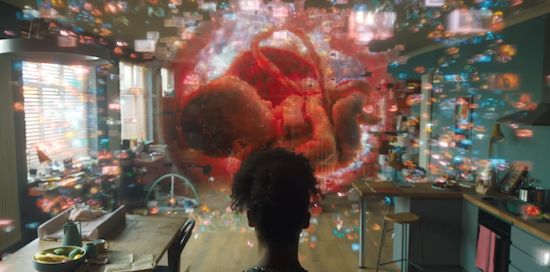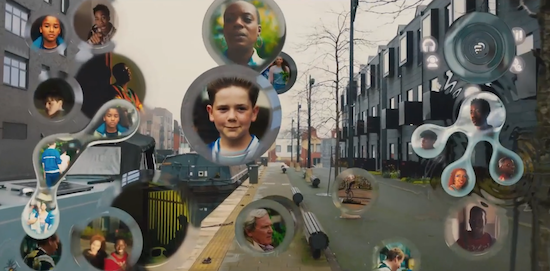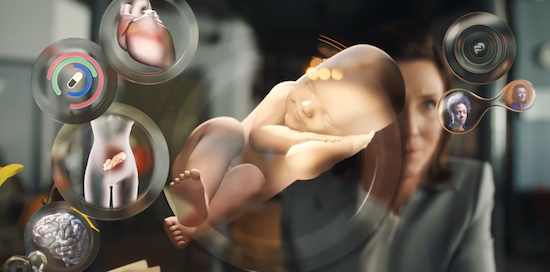How THE FEED’s Team Got the Look of its Digital Interface
November 27, 2019 by Marisa Roffman

Credit: Amazon
When it came time for THE FEED team to adapt the Nick Clark Windo novel, executive producer Channing Powell opted to dive deeper into the world set up at the very beginning of the book.

Credit: Amazon
But with that came an extended amount of time with the titular The Feed, as the characters—in the early days of the story—depended on the high-tech implant to communicate, keep track of their every day lives, and find information they needed. (Not to mention the central family of the show, the Hatfields, were the architects behind the technology.)
The interface was frequently shown in the Amazon series’ first season, which made its design vital to production—both to showcase how it could have easily been integrated into humanity and to be visually appealing enough for the television audience.
“I definitely knew that I wanted it to be A) as realistic but also as B) as simplistic as possible,” Powell says. “Something that didn’t feel alienating or too far out of reach, like that could never happen. Because it is happening; people are actually working on things that will eventually turn into The Feed. So how can we make it [now]?”
“I don’t think this is a full sci-fi show, but sometimes science-fiction has a coldness to it, that doesn’t feel as accessible to me,” she continues. “So I was really wary of that; I wanted it to feel as organic and warm as possible, so that it felt inviting and like something the viewer would think—before things start to go wrong—’Oh, The Feed is actually really cool. I would love to have that.’ We kind of entice the viewer with something that looks beautiful and looks like it enhances your world, while organically fitting into your world. But then starts to go awry and you realize the problems with it.”

Credit: Amazon
Of course, putting The Feed into the series itself was its own challenge, since the directors needed to account for it during production.
“We had a lot of meetings about how we could integrate the POV organically into the shots as possible,” Powell says. “I didn’t want peep show POV shots that felt really bumpy and jarring and and unnatural. And we just tried to really blend the visuals of it into our own eyesight and our own bodies as much as possible—as much as The Feed would be.”

Credit: Amazon
The experience was also a learning curve for the actors, who had to remind themselves that this wasn’t that far out there.
“What I tried to do on day one, especially for the actors who were coming in [after we started] was [making sure we all] understood the technology,” Guy Burnet, whose Tom struggles with his family’s creation in the series, says. “The initial impulse was to stare like zombies—stare out—[while staring at The Feed]. But it wouldn’t happen that way. The same way that our [current smart]phones in our hand, we don’t necessarily just stop the whole world. We answer a text and then we carry on with what’s around us. So what I wanted to establish was if any of us are in The Feed, we will behaving in a completely normal manner, whether The Feed was on or off in our minds. We can still look around and talk to people and behave in a normal manner while it was connected.”
THE FEED, Now Streaming, Amazon
RELATED:
- THE FEED Team on Adapting the Book for Television
- Amazon Sets November Launch for Adaptation of THE FEED
Follow @GiveMeMyRemote and @marisaroffman on Twitter for the latest TV news. Connect with other TV fans on GIVE ME MY REMOTE’s official Facebook page.
And be the first to see our exclusive videos by subscribing to our YouTube channel.
As an Amazon Associate we earn from qualifying purchases made through links/ads placed on the site.
Related Posts
Filed under The Feed
Comments Off on How THE FEED’s Team Got the Look of its Digital Interface



Comments